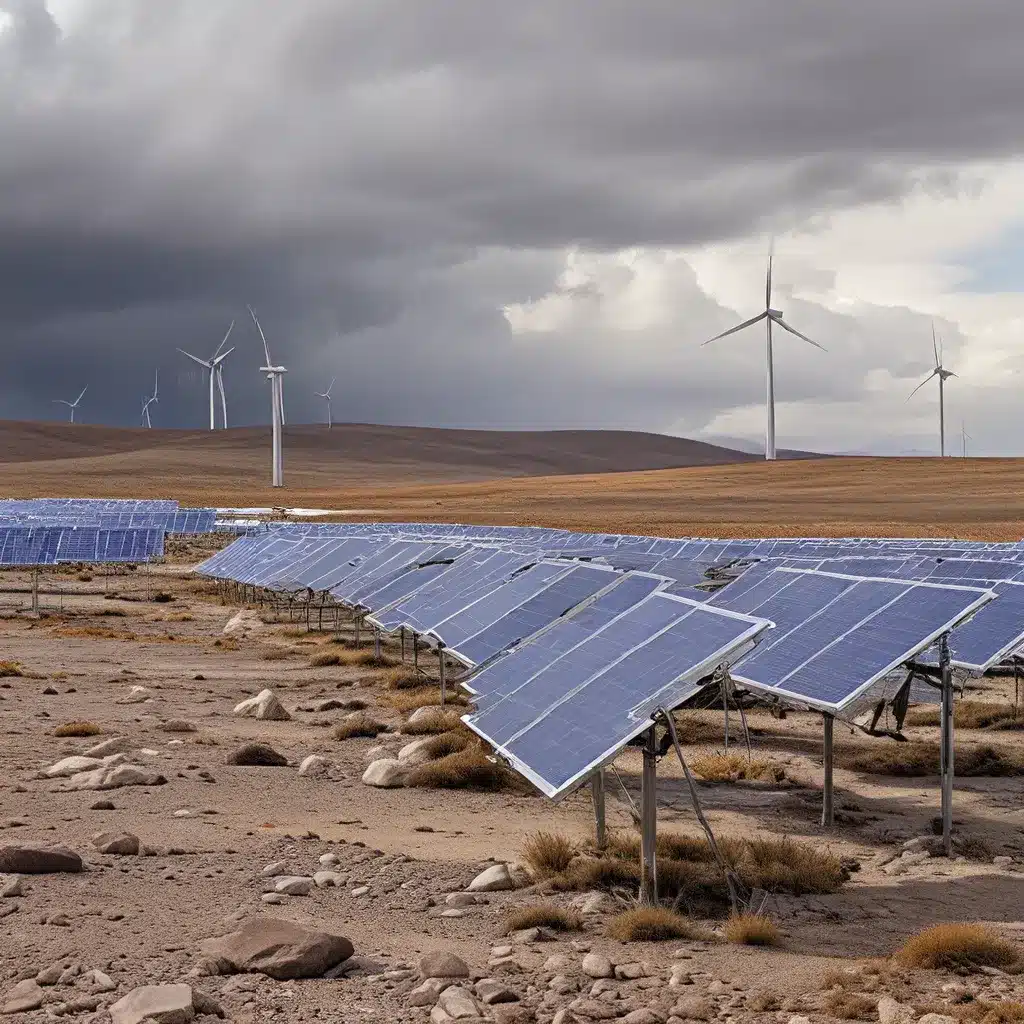
As an avid explorer and nature enthusiast, I’ve always been captivated by the raw beauty and unbridled power of our planet’s extreme climates. From the frigid tundras of the Arctic to the scorching deserts of the Middle East, these environments push the limits of what’s humanly possible. But amidst the grandeur and harshness, I’ve discovered a remarkable story unfolding – the race to harness renewable energy in these unforgiving corners of the world.
Battling the Elements: Renewable Energy at the Earth’s Extremes
It’s no secret that renewable energy sources like wind, solar, and hydropower hold immense potential to power our future. But when you venture into regions defined by extreme temperatures, volatile weather patterns, and limited infrastructure, the challenges of integrating renewables can seem downright daunting.
Take the case of Alaska, for instance. As the northernmost state in the U.S., Alaska boasts some of the most extreme and varied environments on the planet – from Arctic tundra to temperate rainforests. Here, the National Renewable Energy Laboratory (NREL) is pushing the boundaries of what’s possible, pioneering cutting-edge technologies that can withstand the harshest of conditions.
NREL’s Alaska Campus in Fairbanks is a veritable laboratory for innovation, where researchers collaborate with local communities to develop energy-efficient building designs, advanced ventilation systems, and resilient renewable energy solutions. By tackling challenges like permafrost thaw, heavy snowfall, and limited daylight, they’re ensuring that the clean energy revolution leaves no one behind, even in the world’s most unforgiving corners.
Building for the Future: Innovative Approaches to Extreme Climate Resilience
One of the key focuses at NREL’s Alaska Campus is building envelope design – the strategic use of materials and techniques to create super-insulated structures that balance energy efficiency, moisture management, and occupant health. These cutting-edge building envelopes incorporate the latest advancements, from advanced insulation to adjustable foundations that can adapt to shifting ground conditions.
But it’s not just about the physical infrastructure. Indoor air quality is equally crucial in extreme climates, where people are often forced to spend more time indoors. NREL researchers are developing innovative ventilation systems and sanitation technologies to ensure that these living spaces are not only energy-efficient, but also healthy and comfortable for their occupants.
Portable Arctic Sanitation Systems, for example, provide a low-tech, gravity-fed water supply and drying toilets that can make all the difference in remote communities. These kinds of solutions aren’t just about technology – they’re about empowering people and promoting energy justice in the face of daunting environmental challenges.
Harnessing the Elements: Renewable Energy Integration at the Extremes
Of course, building resilient infrastructure is only half the battle. Integrating renewable energy sources into these extreme environments is a whole other challenge, one that NREL is tackling head-on.
In Alaska, the researchers are evaluating a diverse array of renewable technologies, from heat pumps and solar photovoltaics to ground source heat pumps. They’re not just testing the equipment’s performance, but also exploring innovative ways to overcome the unique obstacles presented by limited daylight, heavy snowloads, and depleted ground thermal energy.
By developing thermal storage techniques, advanced control systems, and grid integration strategies, NREL is paving the way for a future where even the harshest corners of the planet can be powered by clean, sustainable energy. And it’s not just about Alaska – the lessons learned here have the potential to benefit communities around the world facing similar environmental adversities.
Collaboration and Resilience: The Path Forward in Extreme Climates
But the NREL team knows that their work is only one piece of the puzzle. Collaboration and community engagement are essential to ensuring that these innovative solutions are truly effective and sustainable.
That’s why they work closely with local governments, industry partners, and grassroots organizations to co-develop technologies that are not just energy-efficient, but also culturally appropriate and durable to the extreme conditions. By incorporating feedback from the people who know these environments best, they’re able to create solutions that truly meet the needs of the communities they serve.
And as the climate continues to change, this collaborative approach will be more important than ever. Extreme weather events, water scarcity, and other environmental threats are already impacting communities across the globe, and those on the frontlines of these challenges will need all the support they can get.
A Brighter Future, One Extreme at a Time
As I reflect on my journey through the world’s most unforgiving climates, I’m in awe of the tenacity and ingenuity of the people who call these places home. And I’m inspired by the work of organizations like NREL, who are proving that even the harshest environments can be powered by clean, renewable energy.
Firewinder may not be operating in the Arctic tundra or the scorching deserts, but we’re committed to the same principles of innovation, collaboration, and resilience. Whether it’s designing cutting-edge renewable energy solutions or empowering communities to take charge of their own energy future, we’re driven by the belief that a sustainable, equitable future is possible, no matter the challenges.
So as we continue to push the boundaries of what’s possible in renewable energy, let’s keep our eyes fixed on the horizon. Because in a world that’s becoming increasingly unpredictable, the power of innovation and the strength of community may just be the keys to unlocking a brighter tomorrow – even in the face of the most extreme conditions.

